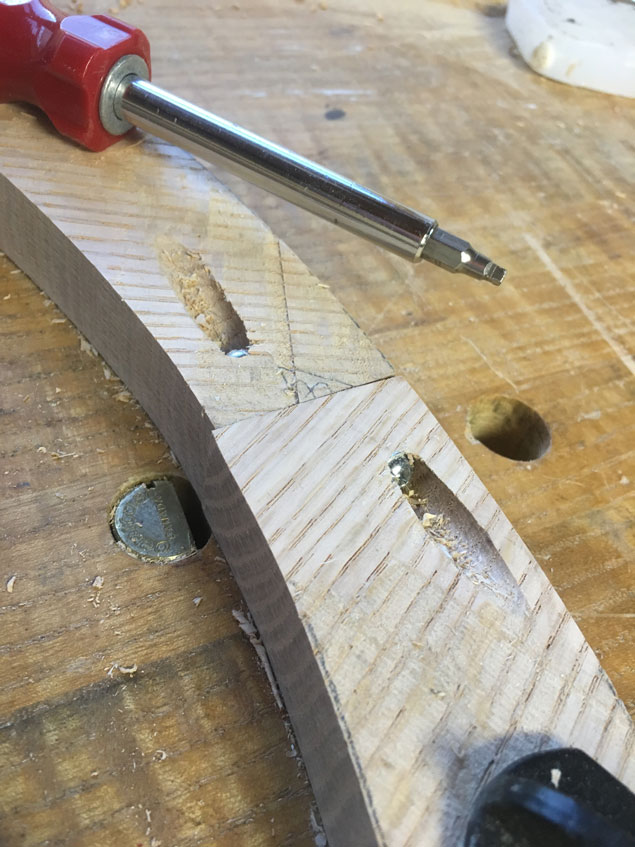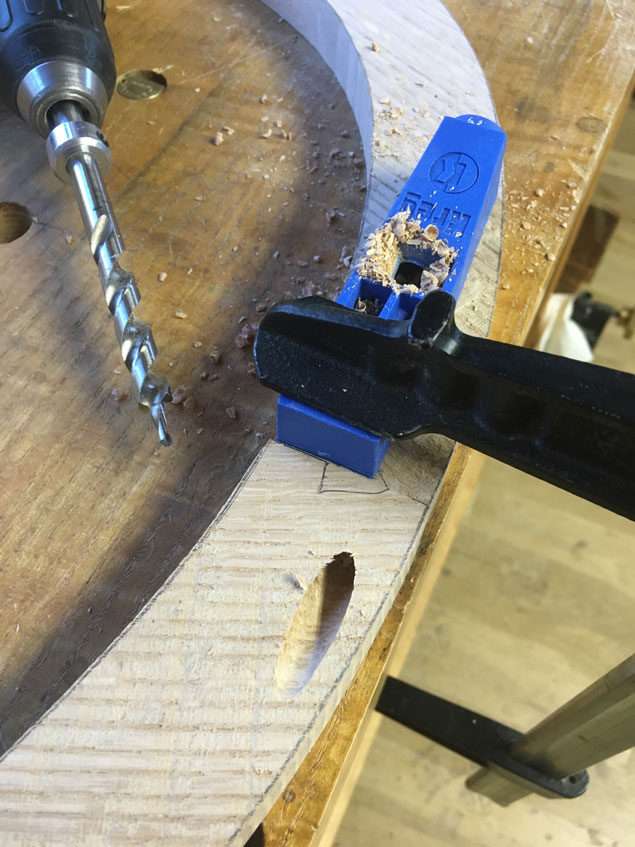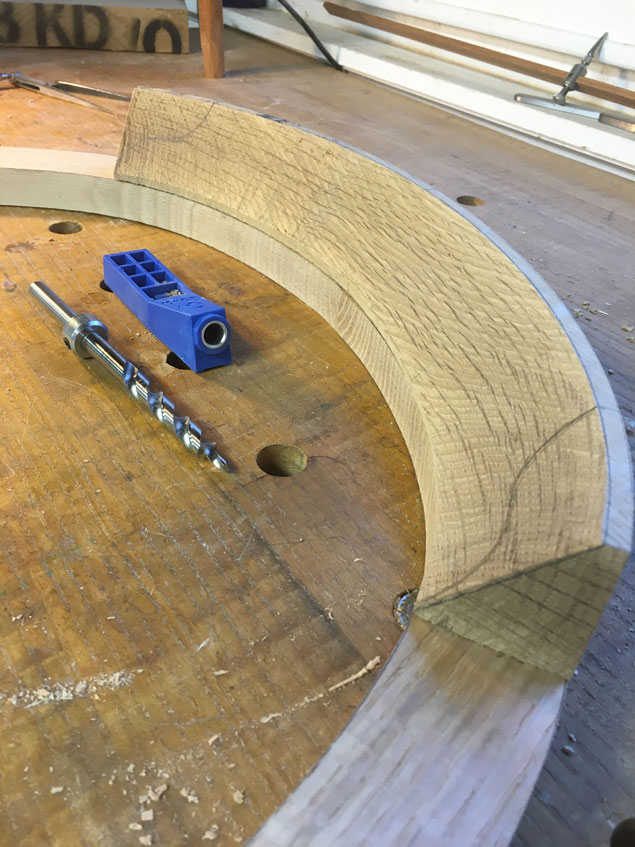We may receive a commission when you use our affiliate links. However, this does not impact our recommendations.
I don’t have enough elitism in my bloodstream to poop on pocket screws too much.
For starters, they are incredibly ingenious and allow people to build things with only a handful of tools and almost no clamps. And they have been around for a long time – I’ve seen pocket screws in many piece of 19th-century furniture, including Shaker stuff.
But when the joinery is exposed, it’s quite ugly. And so I avoid using them for what they were intended to do: make boxes and face frames.
Instead, I use them as clamps. And at clamping, pocket screws have few equals.
Sometimes I’ll use them to help fix splits in thick slabs, especially when I can place them where they cannot be seen. (Check that operation out here.) I also use them for clamping up tricky miters, including compound ones. Nothing can pull a wacky miter together with ease.
Today I used them to piece together a really odd short-grain arm bow for a Welsh chair I’m prototyping.
The arm bow has three pieces. Two are the long curved bits for your arms. The third is the backrest. Getting all three pieces glued together can be a tricky task. I’ve used pinch dogs in the past, but my pich dogs have gone missing. Plus they leave some unsightly marks as well.
In this case, pocket screws were the perfect solution. I have a Mini Kreg jig that I bought on sale at my home center for about $20 years ago. It’s not fancy, but it works quite well.
I butted the two pieces together and clamped them to my benchtop. Then I clamped the jig on the joint and cut two pocket holes – one from each side of the joint. Driving the screws in pulled the joint tight. Now I have several choices.
- I can leave the joint as-is. Drill the holes for the spindles and then cover the pocket holes with the backrest.
- I can glue and screw the joint, covering it with the backrest.
- I can glue and screw the joint. Then remove the screws after the glue is dry. Then cover the joint with the backrest.
In all three cases I get a tight joint with no visible evidence of how it was put together.
— Christopher Schwarz
Here are some supplies and tools we find essential in our everyday work around the shop. We may receive a commission from sales referred by our links; however, we have carefully selected these products for their usefulness and quality.













Good Evening Christopher
I don’t know how else to contact you and have a question.
The Traditional Saw Bench instructions have drawbored and wedged tenons and everything is first class construction, but end the end you say to use plywood for the top braces; why not a board of the same wood as the rest of the bench? Movement?
If you don’t want this on the web, would you just email me a one liner reason?
Thank you sir,
Bob at rstenevik@att.net
It’s funny I to hear about what tools/techniques people consider “cheating” or inferior.
I get this in glass all the time, especially when it comes to adhesives. BTW Glues are universally poo-poo’d in the glass craft world. Most of the time people don’t have a good reason for avoiding on technique or clinging to another. People often have excuses like it’s not traditional, it will degrade over time, or it’s cursed by demons. It usually boils down to a lack of understanding/familiarity, willful ignorance, or simply a hair-across the butt personal preference (I don’t like it). That’s cool, whatever floats your boat.
I personally don’t really believe that there is such a thing as cheating if the work product is functionally/aesthetically comparable or improved with the use of “alternative” techniques/materials. Most people that get wrapped up in these debates have probably aren’t dealing with producing work under the pressures of time and money.
A couple of years ago I was making a cabinet prototype for a show during NYC design week. I was working simultaneously on a no fewer than 4 brand new designs. I was sweating all of the details and wanted everything to be perfect and hand-made. The case work was all giant dovetails and took me much longer than I had and anticipated and set me back a day in my schedule. For the stand, I was planning on chopping and sawing the MT’s by hand but now with less than 36 before delivery I had to change the plan. If I made a mistake I would be S.O.L. so I grabbed the Domino and finished the stand in 45 minutes, unclinched my butt-cheeks, and went for a sandwich. The great irony is that the beautifully dovetailed case which I spent 3-4 days on ended up self-destructing within 2 months after the show due to rapidly resawing and milling kiln dried wood that was LOADED with residual stress. I still have the stand which is rock-solid after being kicked around for 5-6 years. Someday will end up as my coffee table.
2013 WIA I was running late and I jumped on the elevator at the Convention Center and here was this hippie looking dude with a chair held together with pocket screws. He with some kind of Northern European accent said he was giving a seminar on chair making,I looked at the chair and thought to myself good luck with that buddy. Later I kinda looked at the chair a little different when I found out it was Ejler Hjorth-Westh and his teaching chair. My best lesson and my favorite story from WIA you just never can judge a book by it’s cover.